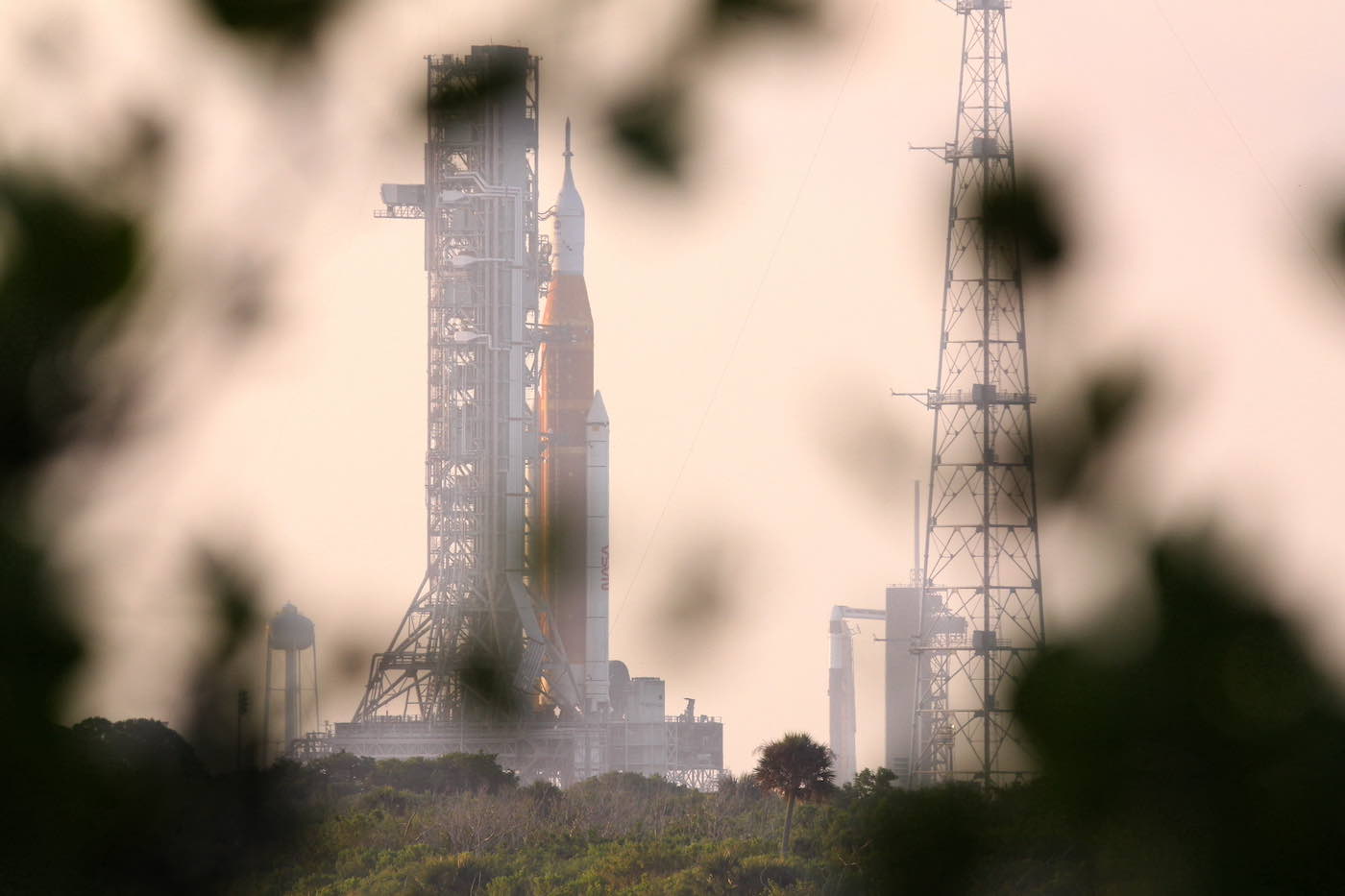
NASA’s Artemis 1 moon rocket and SpaceX’s Falcon 9 shared the scene Wednesday at the Kennedy Space Center — the first time since 2009 that rockets have stood on both pads at Launch Complex 39.
The Space Launch System is standing on pad 39B at Kennedy, where it is awaiting another countdown dress rehearsal ahead of NASA’s Artemis 1 mission, an unpiloted test flight to the moon with the Orion crew capsule.
About 8,700 feet (2.7 kilometers) to the south, a SpaceX Falcon 9 rocket is vertical on pad 39A, in position for launch Friday on a commercial all-private crew flight to the International Space Station. SpaceX’s Dragon Endeavour spacecraft is mounted on top of the Falcon 9 to ferry the four commercial space fliers to the space station.
It was a common sight decades ago to see space shuttles on both of Kennedy’s launch pads, but the last time a shuttle occupied both pads at the same time was in May 2009, when the shuttle Endeavour stood on pad 39B while the shuttle Atlantis launched from pad 39A on a servicing mission to the Hubble Space Telescope.
The Dragon Endeavour spacecraft was partly named in honor of the retired space shuttle.
Kennedy’s launch pads were originally constructed in the 1960s for NASA’s Saturn 5 moon rocket, then modified for the space shuttle program.
Pad 39A, the departure point for the first moon landing mission and the first space shuttle flight, was leased to SpaceX in 2014. The commercial space company began firing off Falcon 9 rockets from the historic launch complex in 2017. It’s now SpaceX’s sole launch pad for commercial crew missions and for flights of the company’s powerful Falcon Heavy rocket, using three Falcon 9 rocket cores bolted together.

Pad 39B is still operated by NASA, which upgraded the facility for the Space Launch System.
The SLS is the giant rocket NASA intends to use for astronaut missions to the moon. The Artemis 1 test flight is a precursor to future crew launches on the SLS rocket and Orion spacecraft, beginning with the Artemis 2 mission, slated to loop around the moon no earlier than 2024.
Future missions will link up with a commercial human-rated lander near the moon to take astronauts down to the lunar surface. SpaceX is on contract to build the first one using a derivative of its super-heavy lift reusable Starship rocket, itself in development with a greater lift capability than the Space Launch System.
Here’s how the SLS and Falcon 9 stack up.
• Space Launch System / Orion:
- 322 feet (98 meters) tall
- 8.8 million pounds of liftoff thrust
- 95 metric tons of payload to low Earth orbit
- Human-rated
- All major structural elements are expendable
- Up to $4.1 billion per flight (according to NASA inspector general estimate)
• Falcon 9 / Crew Dragon:
- 215 feet (65 meters) tall
- 1.7 million pounds of liftoff thrust
- 22.8 metric tons to low Earth orbit (with expendable booster)
- Human-rated
- First stage and Crew Dragon reusable; Second stage and trunk expendable
- Up to $220 million per flight (according to NASA inspector general estimate)

Email the author.
Follow Stephen Clark on Twitter: @StephenClark1.
from Spaceflight Now https://ift.tt/fWyJrpl
via World Space Info







0 comments:
Post a Comment